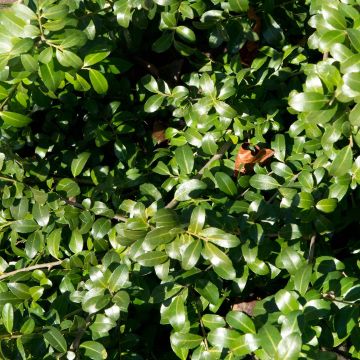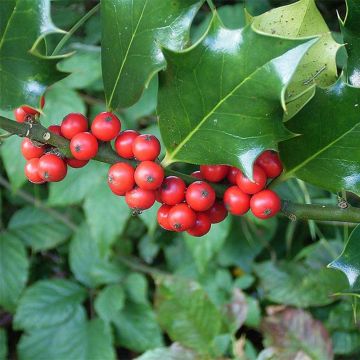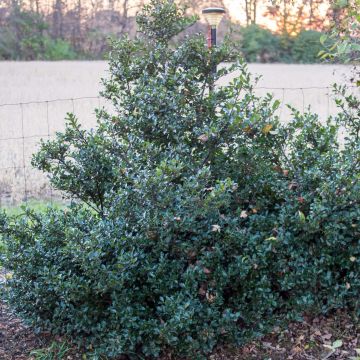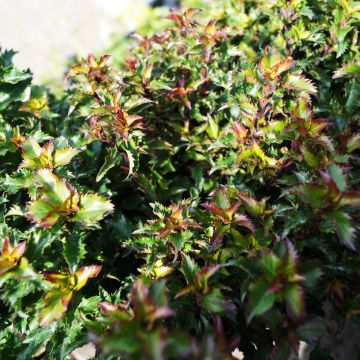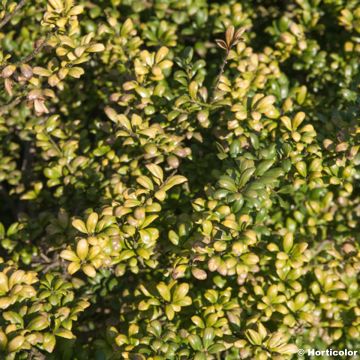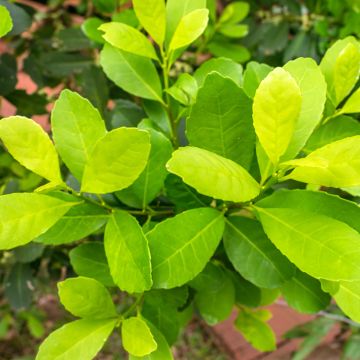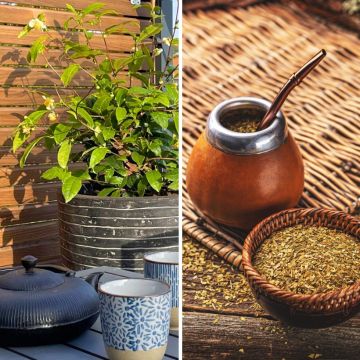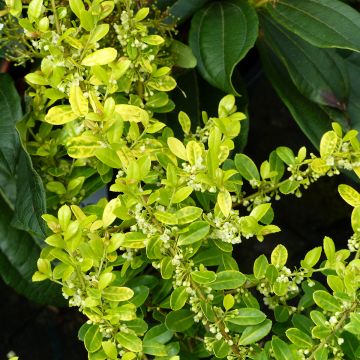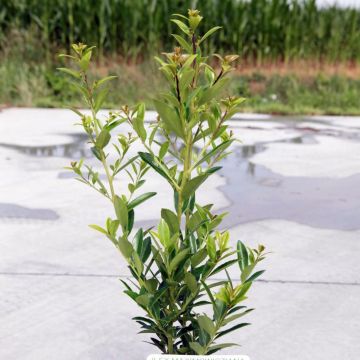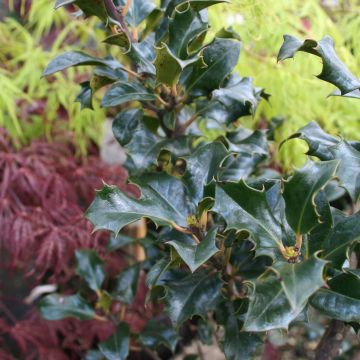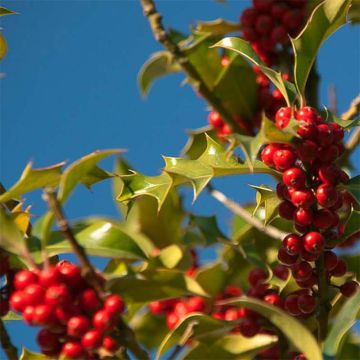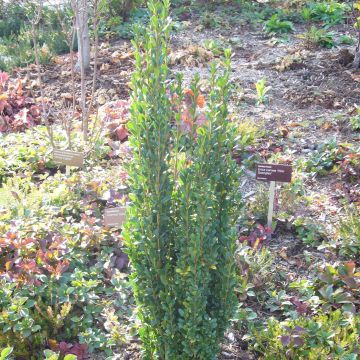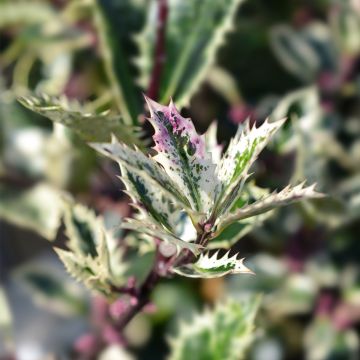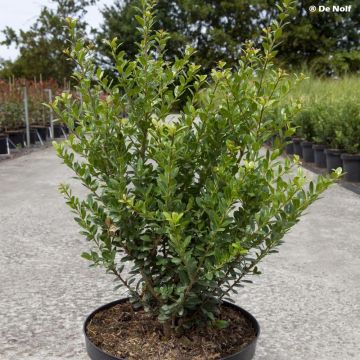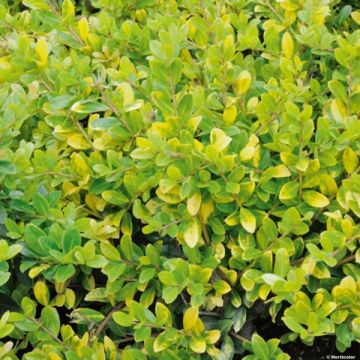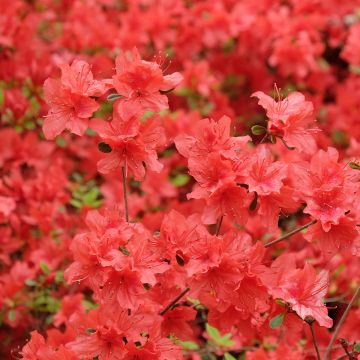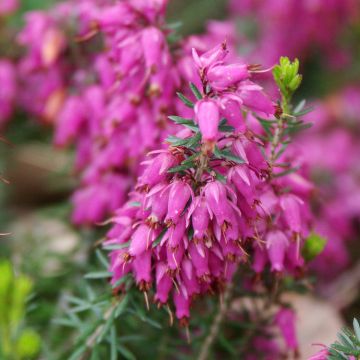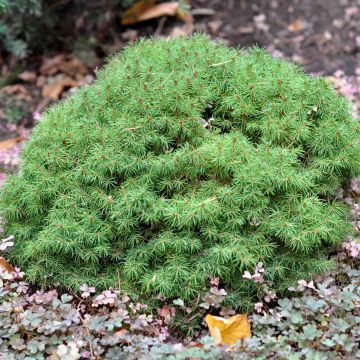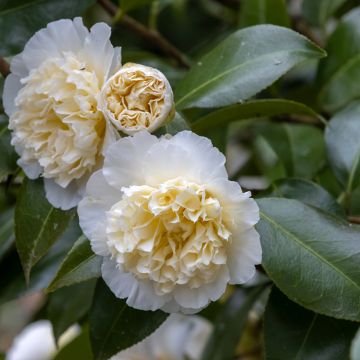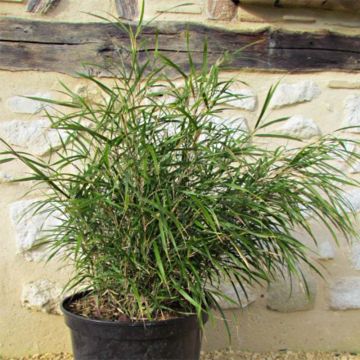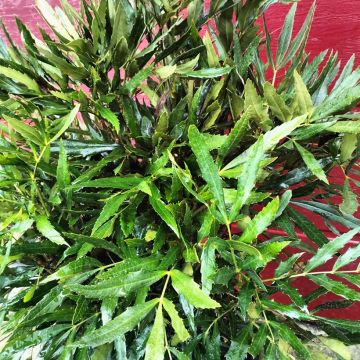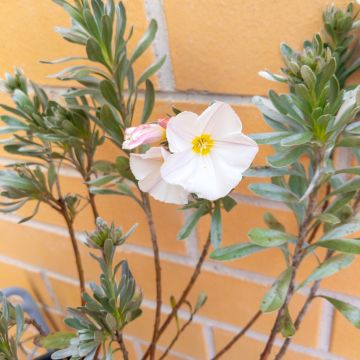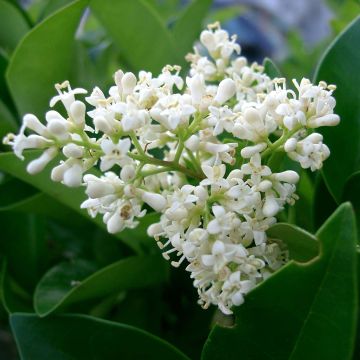Shipping country and language
Your country of residence may be:
Your country of residence is:
For a better user experience on our website, you can select:
Your shipping country:
-
Andorra
-
Austria
-
Belgium
-
Bulgaria
-
Canada
-
Chile
-
Croatia
-
Cyprus
-
Czechia
-
Denmark
-
Estonia
-
Finland
-
France
-
Germany
-
Greece
-
Hungary
-
Iceland
-
Ireland
-
Italy
-
Latvia
-
Lithuania
-
Luxembourg
-
Malta
-
Monaco
-
Netherlands
-
Poland
-
Portugal
-
Romania
-
Slovakia
-
Slovenia
-
Spain
-
Sweden
-
Switzerland
-
United Kingdom
We only deliver seed and bulb products to your country. If you add other products to your basket, they cannot be shipped.
Language:
-
French
-
German
-
Spanish
-
English
-
Italian
My Account
Hello
My wish lists
Log in / Register
Existing customer?
New customer?
Create an account to track your orders, access our customer service and, if you wish, make the most of our upcoming offers.
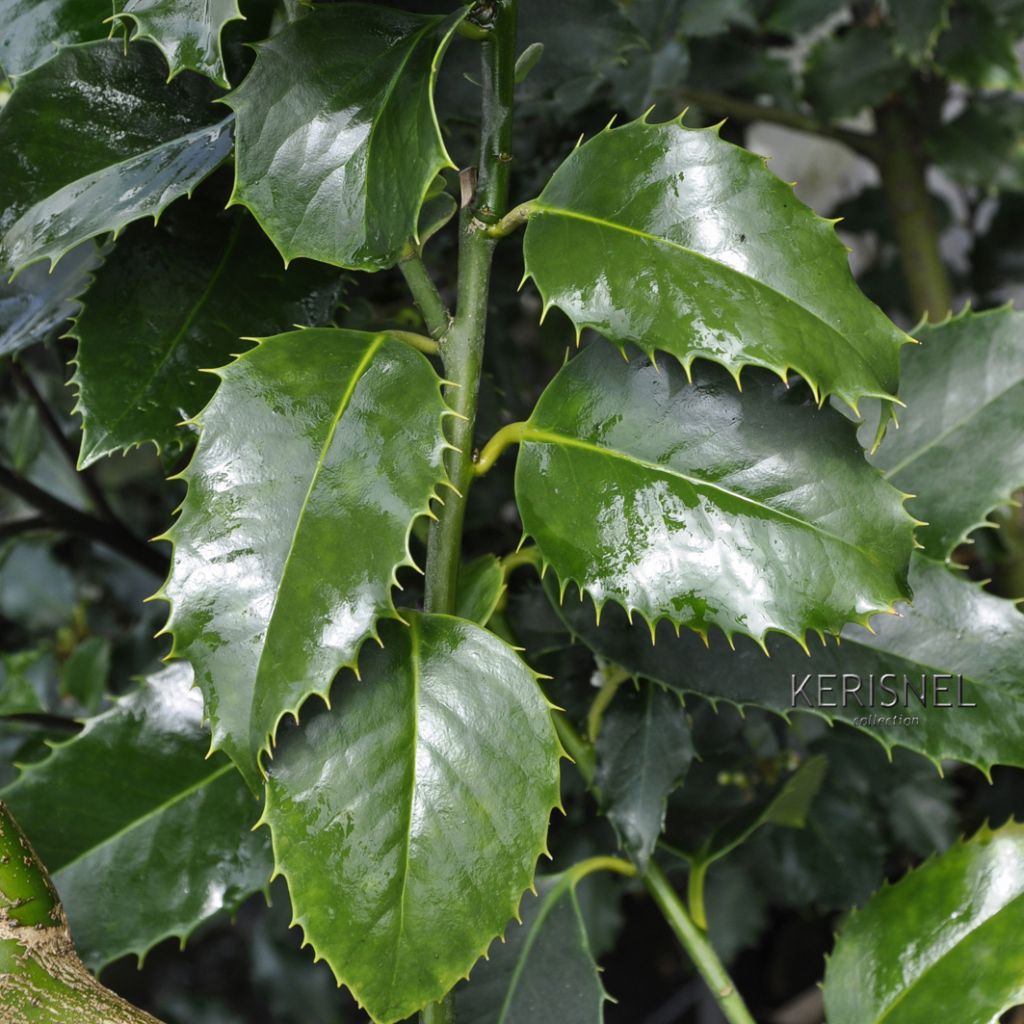

Houx à feuilles de châtaignier - Ilex x koehneana Castaenifolia
Ilex x koehneana Castaenifolia
Ilex x koehneana Castaenifolia
Chestnut Leaf Holly
Why not try an alternative variety in stock?
View all →Order in the next for dispatch today!
Dispatch by letter from €3.90.
Delivery charge from €5.90 Oversize package delivery charge from €6.90.
More information
This item is not available in your country.
Schedule delivery date,
and select date in basket
This plant carries a 24 months recovery warranty
More information
We guarantee the quality of our plants for a full growing cycle, and will replace at our expense any plant that fails to recover under normal climatic and planting conditions.
From €5.90 for pickup delivery and €6.90 for home delivery
Express home delivery from €8.90.
Does this plant fit my garden?
Set up your Plantfit profile →
Description
Ilex koehneana 'Castaenifolia', also known as the Chestnut-leaved Holly, is a large variety with rapid growth, which is unusual for holly plants. It forms a large, sparsely branched pyramid in just a few years, adorned with beautiful dark green, glossy, spiny-edged leaves that resemble those of the chestnut tree. Its young spring shoots are often tinged with red. The female plants produce large numbers of lovely dark red berries from September to March. This holly prefers neutral to slightly acidic soil and tolerates drought well. It can be planted in full sun or partial shade, in a mixed hedge or as a specimen tree.
The Chestnut-leaved Holly is a hybrid resulting from the cross-breeding between Ilex aquifolium, the common holly of our forests, and Ilex latifolia, a Japanese species with immense leaves that also stands out for its tall stature. All these shrubs belong to the Aquifoliaceae family.
The 'Castaneifolia' variety quickly reaches a height of 4 to 6 meters (13 feet 1 inches to 19 feet 8 inches), or even more, with a spread of 2.50 to 4 meters (8 feet 2 inches to 13 feet 1 inches). It is also distinguished by its large, tough, elliptical leaves that are slightly undulate, dentate, and glossy. All hollies are dioecious plants, meaning that there are male and female subjects. Only the female plants bear berries, which are highly valued for their ornamental value. The female Chestnut-leaved Holly produces small, inconspicuous but nectar-rich flowers in spring, which will develop into abundant fleshy, ovoid deep red berries after fertilisation by a male holly planted nearby. Identifying the sex of the flowers requires a trained eye; they all have four white petals with purple tips, and their surface is waxy, but the male flowers can be recognized by their four prominent yellow stamens, while the female flowers have a short, oval green pistil. The same shrub can produce both male and female flowers, which cannot be pollinated. The seeds are dispersed by birds that love the fruits.
The fast-growing Ilex (x) koehneana 'Castaenifolia' will please gardeners in a hurry to create a brand new garden. It is perfect in a mixed hedge, alongside Eleagnus, Laurustinus, Coroneaster lacteus, Photinia serratifolia, or Mexican orange. It dislikes excessive limestone, which causes its beautiful foliage to yellow, and prefers well-drained, fairly fertile soil. Hardy well below -15°C, it thrives in semi-shaded to shaded areas, for example under trees or on the edge of woodlands, in a large natural garden. When planted as a specimen tree or shaped into a topiary, it becomes a focal point in winter. It can also be used in large pots. Plant it in Zen gardens alongside bamboo, Japanese maples, camellias...
Hollies are both loved and misunderstood plants. The genus comprises nearly 800 deciduous or evergreen species, generally native to the temperate northern hemisphere. These ancient plants have experienced periods of glaciation and dry, warm periods in our climate history, making them extremely adaptable and resistant. Their wood, white to cream-coloured, is very low in water, even when green. It is dense and heavy, yet soft and easy to work with in cabinetmaking. It is also an excellent fuel for heating, even when green. Finally, their foliage and (inedible) berries are rich in caffeine. A tea is made with their leaves in the Black Forest.
Report an error about the product description
Ilex x koehneana Castaenifolia in pictures
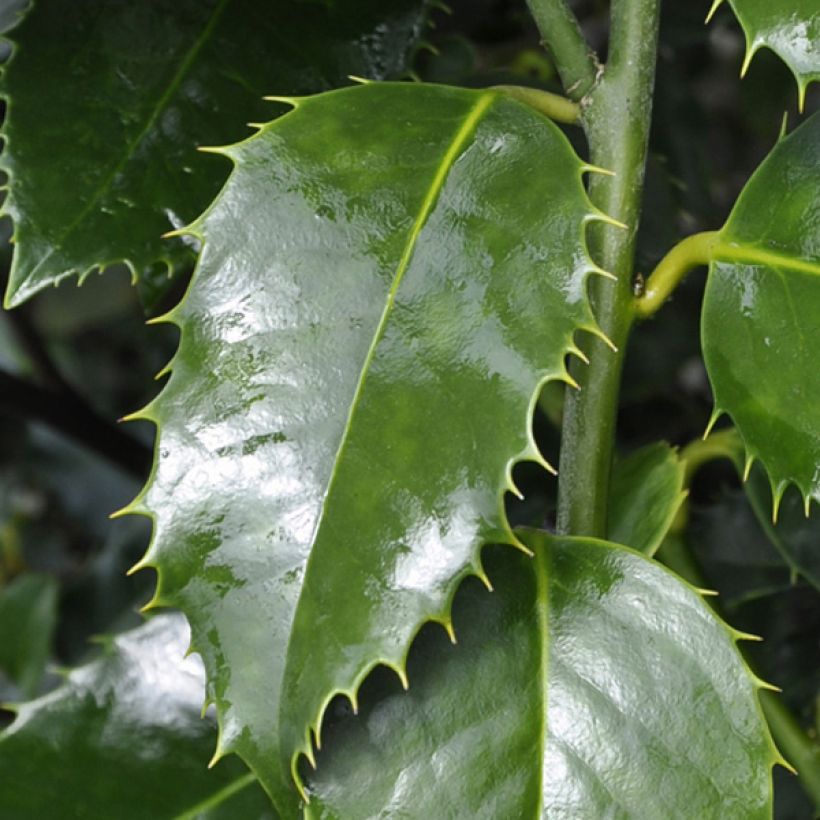

Plant habit
Flowering
Foliage
Botanical data
Ilex
x koehneana
Castaenifolia
Aquifoliaceae
Chestnut Leaf Holly
Cultivar or hybrid
Other Ilex - Holly
Planting and care
To plant the chestnut-leaved holly, add some compost into your garden soil to slightly acidify and enrich it. If your soil is rich in limestone, the holly may tend to develop chlorosis (the foliage gradually turns yellow around the leaf veins). Choose a semi-shaded or shaded location in a warm climate. Water well for the first 3 years especially during the summer, in case of prolonged drought, to help the shrub establish itself. It will then grow well on its own, as it tolerates drought quite well. In the first few years, do some training pruning in spring by selecting the branches you want to keep. Step back to see your holly as a whole in order to determine the shape and arrangement of the short stems. The Ilex may be attacked by holly leaf miners, white scale insects in spring, and mites and aphids in summer.
Planting period
Intended location
Care
This item has not been reviewed yet - be the first to leave a review about it.
Evergreen shrubs
Haven't found what you were looking for?
Hardiness is the lowest winter temperature a plant can endure without suffering serious damage or even dying. However, hardiness is affected by location (a sheltered area, such as a patio), protection (winter cover) and soil type (hardiness is improved by well-drained soil).

Photo Sharing Terms & Conditions
In order to encourage gardeners to interact and share their experiences, Promesse de fleurs offers various media enabling content to be uploaded onto its Site - in particular via the ‘Photo sharing’ module.
The User agrees to refrain from:
- Posting any content that is illegal, prejudicial, insulting, racist, inciteful to hatred, revisionist, contrary to public decency, that infringes on privacy or on the privacy rights of third parties, in particular the publicity rights of persons and goods, intellectual property rights, or the right to privacy.
- Submitting content on behalf of a third party;
- Impersonate the identity of a third party and/or publish any personal information about a third party;
In general, the User undertakes to refrain from any unethical behaviour.
All Content (in particular text, comments, files, images, photos, videos, creative works, etc.), which may be subject to property or intellectual property rights, image or other private rights, shall remain the property of the User, subject to the limited rights granted by the terms of the licence granted by Promesse de fleurs as stated below. Users are at liberty to publish or not to publish such Content on the Site, notably via the ‘Photo Sharing’ facility, and accept that this Content shall be made public and freely accessible, notably on the Internet.
Users further acknowledge, undertake to have ,and guarantee that they hold all necessary rights and permissions to publish such material on the Site, in particular with regard to the legislation in force pertaining to any privacy, property, intellectual property, image, or contractual rights, or rights of any other nature. By publishing such Content on the Site, Users acknowledge accepting full liability as publishers of the Content within the meaning of the law, and grant Promesse de fleurs, free of charge, an inclusive, worldwide licence for the said Content for the entire duration of its publication, including all reproduction, representation, up/downloading, displaying, performing, transmission, and storage rights.
Users also grant permission for their name to be linked to the Content and accept that this link may not always be made available.
By engaging in posting material, Users consent to their Content becoming automatically accessible on the Internet, in particular on other sites and/or blogs and/or web pages of the Promesse de fleurs site, including in particular social pages and the Promesse de fleurs catalogue.
Users may secure the removal of entrusted content free of charge by issuing a simple request via our contact form.
The flowering period indicated on our website applies to countries and regions located in USDA zone 8 (France, the United Kingdom, Ireland, the Netherlands, etc.)
It will vary according to where you live:
- In zones 9 to 10 (Italy, Spain, Greece, etc.), flowering will occur about 2 to 4 weeks earlier.
- In zones 6 to 7 (Germany, Poland, Slovenia, and lower mountainous regions), flowering will be delayed by 2 to 3 weeks.
- In zone 5 (Central Europe, Scandinavia), blooming will be delayed by 3 to 5 weeks.
In temperate climates, pruning of spring-flowering shrubs (forsythia, spireas, etc.) should be done just after flowering.
Pruning of summer-flowering shrubs (Indian Lilac, Perovskia, etc.) can be done in winter or spring.
In cold regions as well as with frost-sensitive plants, avoid pruning too early when severe frosts may still occur.
The planting period indicated on our website applies to countries and regions located in USDA zone 8 (France, United Kingdom, Ireland, Netherlands).
It will vary according to where you live:
- In Mediterranean zones (Marseille, Madrid, Milan, etc.), autumn and winter are the best planting periods.
- In continental zones (Strasbourg, Munich, Vienna, etc.), delay planting by 2 to 3 weeks in spring and bring it forward by 2 to 4 weeks in autumn.
- In mountainous regions (the Alps, Pyrenees, Carpathians, etc.), it is best to plant in late spring (May-June) or late summer (August-September).
The harvesting period indicated on our website applies to countries and regions in USDA zone 8 (France, England, Ireland, the Netherlands).
In colder areas (Scandinavia, Poland, Austria...) fruit and vegetable harvests are likely to be delayed by 3-4 weeks.
In warmer areas (Italy, Spain, Greece, etc.), harvesting will probably take place earlier, depending on weather conditions.
The sowing periods indicated on our website apply to countries and regions within USDA Zone 8 (France, UK, Ireland, Netherlands).
In colder areas (Scandinavia, Poland, Austria...), delay any outdoor sowing by 3-4 weeks, or sow under glass.
In warmer climes (Italy, Spain, Greece, etc.), bring outdoor sowing forward by a few weeks.
